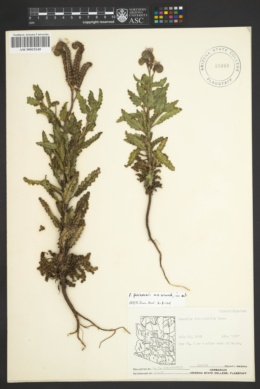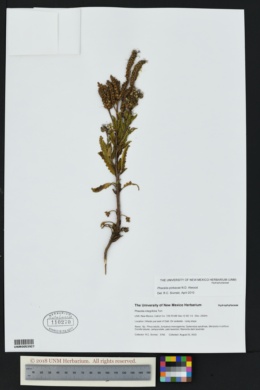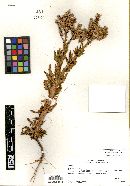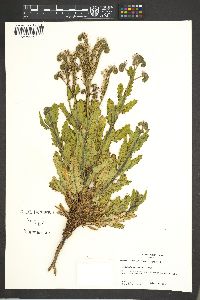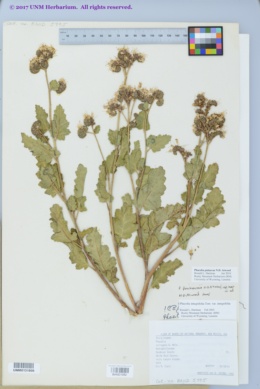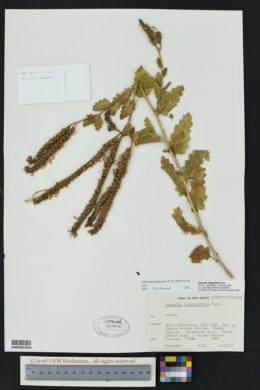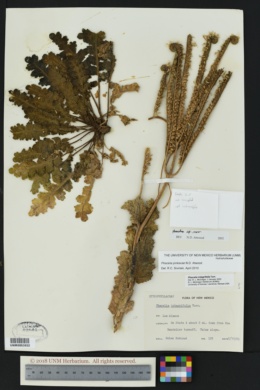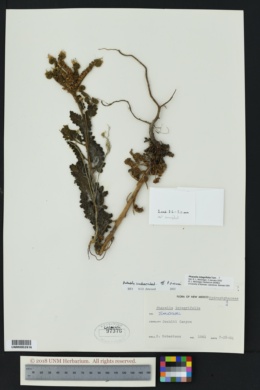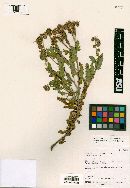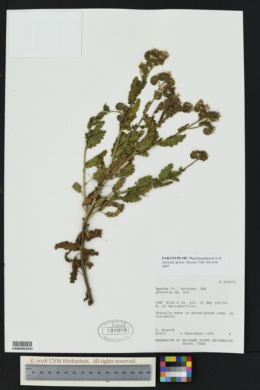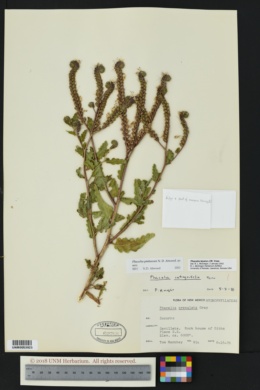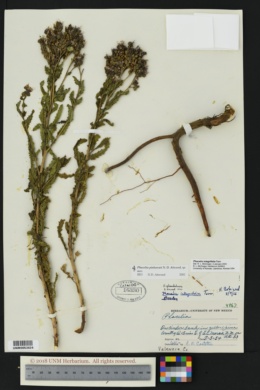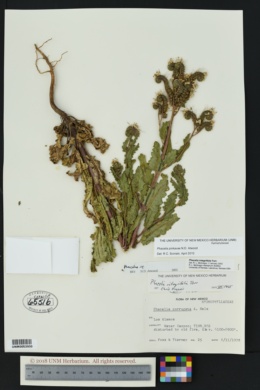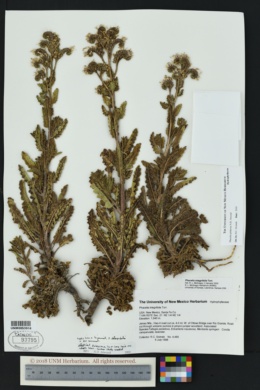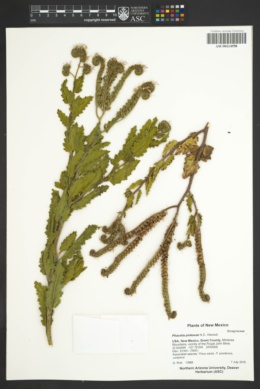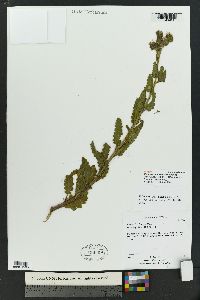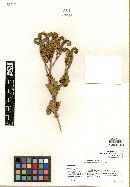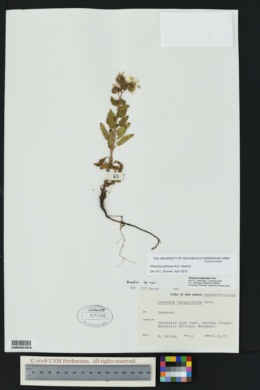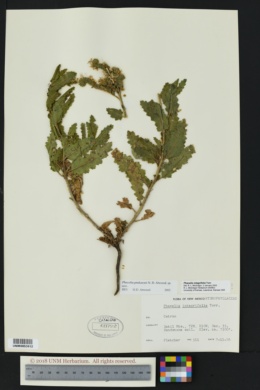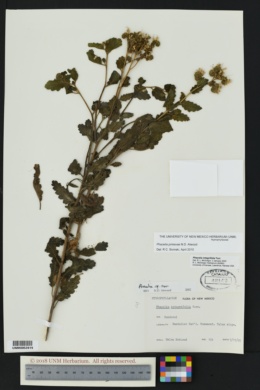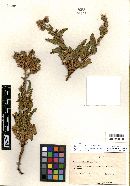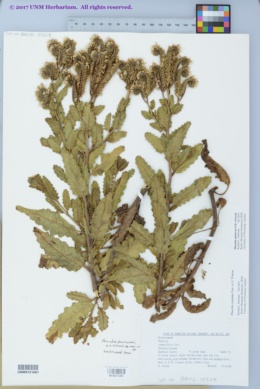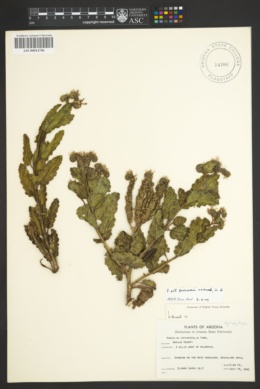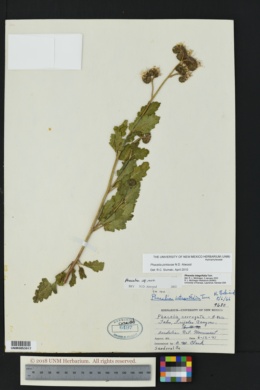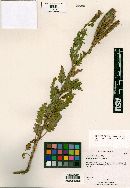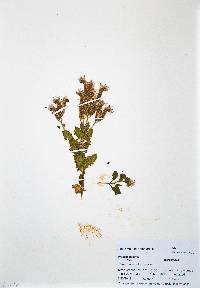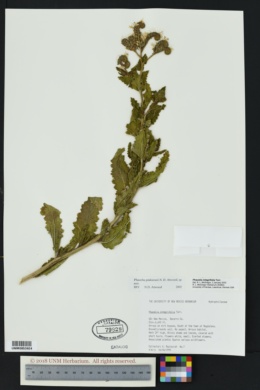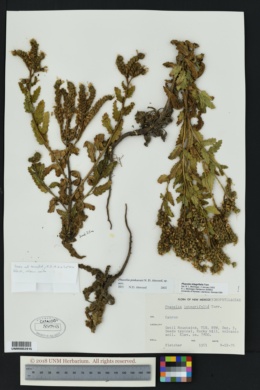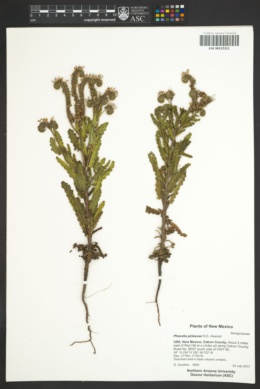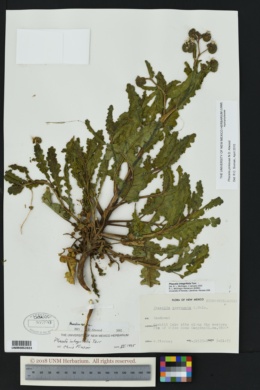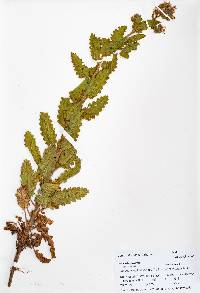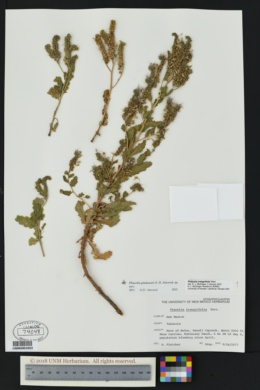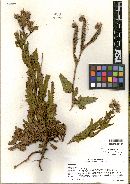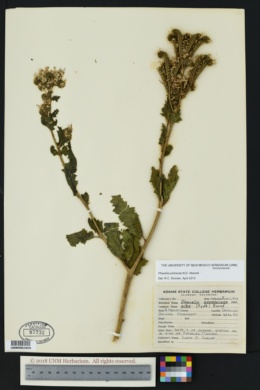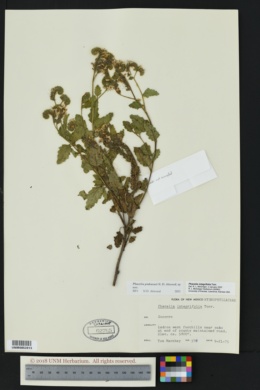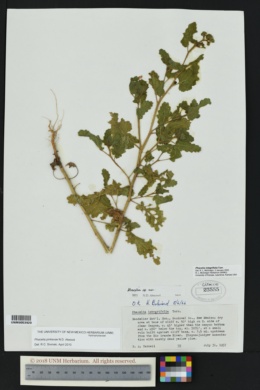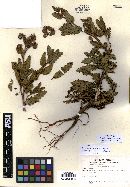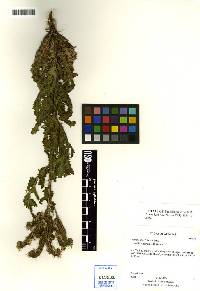Phacelia pinkavae
|
|
|
|
Family: Boraginaceae
Pinkava's Scorpion-Weed
|
NM Rare Plant Technical Council Website, Allred and Ivey 2012, Atwood 2007 Duration: Annual/Biennial Nativity: Native Lifeform: Forb/Herb General: Scented annual to biennial herb, 15-50 cm tall; stems solitary and leafy, with 3-5 lateral branches above the base; stems densely covered with black glandular and nonglandular hairs of various lengths. Leaves: Basal leaves on petioles up to 2 cm long; stem leaves alternate, the uppermost leaves sessile; blades oblong-lanceolate with crenate margins, the upper leaves reduced in size and lanceolate; leaf surfaces densely hairy with gland-tipped and nonglandular hairs. Flowers: Lavender to whitish, arranged in curling (scorpioid) one-sided racemes covered with gland-tipped hairs, with 3-4 racemes at the tip of each branch; racemes expand to 15 cm long when in fruit; sepals 5 per flower, 3 mm long in flower and expanding to 6 mm long in fruit; corolla tube-shaped or bell-shaped, 4-5 mm long, topped with 5 short sparsely hairy lobes; corolla color lavender or rarely white, fading to white in pressed specimens. Fruits: Capsule oval to oblong, 3-4 mm long, covered with bristles and glands; containing black oblong seeds, these 3-4 mm long and 1-2 mm wide, the seed surfaces honeycombed and warty. Ecology: Found in rocky volcanic soils and talus slopes, associated with grassland, grass-shrub, and pinyon-juniper plant communities, from 6,000-8,000 ft (1826-2438 m); flowers late May to August. Distribution: e AZ; sw NM to north-central NM. Notes: This is a recently described species of Phacelia. Most herbarium specimens now identified as this species were formerly identified as the more widespread P. integrifolia. P. pinkavae is primarily set apart from that P. integrifolia by being densely covered with black gland-tipped hairs. There are also differences in seed morphology which will be difficult to see in the field. It is also similar to P. sivinskii; distinguish them based on general growth form and the location of the racemes; P. pinkavae is freely branching plant with several scorpioid racemes located at the tip of each branch. P. sivinskii has one or several wand-like primary stems, each with many short inflorescence branches emerging from among the stem leaves from the top of the plant all the way down to the base. The genus Phacelia has at different times been placed in Hyrophyllaceae (the water-leaf family) and Boraginaceae (the borage family), so you may need to check both families before finding it in reference books and herbarium cabinets. Ethnobotany: Unknown, but other species in the genus have uses. Etymology: Phacelia is based on the Greek phakelos, meaning "cluster," alluding to the densely crowded flower spikes of most species of the genus; pinkavae honors Donald Pinkava (1933-2017), former director of the Arizona State University herbarium and the first person to collect this species. Editor: AHazelton 2017 |


